The Results of This Golf Putting Study Will Surprise You
Golf tips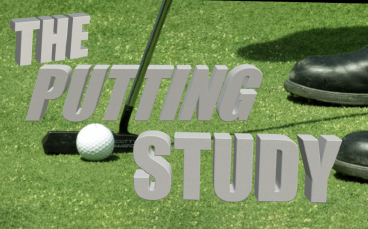
This article is controversial. As much as the results of this study may force you to question your beliefs, have a real good think about these results and the possible implications.
A few years ago, I did a study with 20 golfers which brought a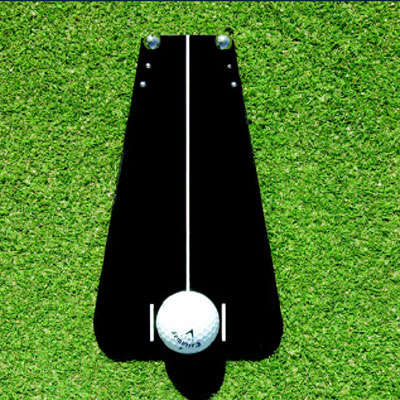 few things to my attention. During the study players were asked to putt down the Pelz putting tutor – a device which notes whether or not you start the ball on your intended line successfully. This was done on a flat 20ft putt and sunsequently it was adjusted to a curvature. At this point players had to guess the break on a breaking their putts. After 10 putts using the Pelz Putting Tutor (see the picture), the line was adjusted to more acceptable and the whole process was repeated. Finally, after another 10 putts, I asked them to focus on making better putting stroke and measured the outcome. Last ten putts confirmed my shocking suspicion!
few things to my attention. During the study players were asked to putt down the Pelz putting tutor – a device which notes whether or not you start the ball on your intended line successfully. This was done on a flat 20ft putt and sunsequently it was adjusted to a curvature. At this point players had to guess the break on a breaking their putts. After 10 putts using the Pelz Putting Tutor (see the picture), the line was adjusted to more acceptable and the whole process was repeated. Finally, after another 10 putts, I asked them to focus on making better putting stroke and measured the outcome. Last ten putts confirmed my shocking suspicion!
Start Line
Before the study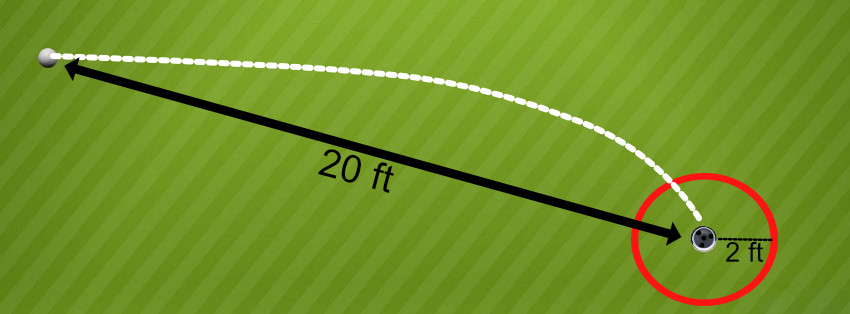 I wanted to check how good a player was at starting the ball (roughly) on their intended line. Players fired 10 putts down the Pelz Putting tutor on a flat putt of 20 ft and the average success rate for group = 8.9 out of 10. Wonderful score!
I wanted to check how good a player was at starting the ball (roughly) on their intended line. Players fired 10 putts down the Pelz Putting tutor on a flat putt of 20 ft and the average success rate for group = 8.9 out of 10. Wonderful score!
Guess the Break
Starting the study the putt was adjusted to a realistic but significant curvature. They were asked where they think they should start the putt – in other words, how much break they should play. This point was noted down with a coin. Yellow star showed good starting line – coin shows where a lot of people aimed.
At this point out of the 20 people,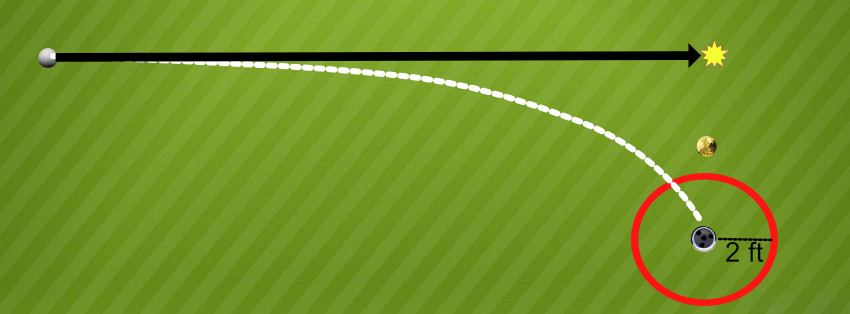
- 16 people under-read the break
- 1 person over-read the break
- 3 people got it within acceptable boundaries (meaning their chosen line allowed the putt to be hit within 2ft of the hole)
This fits with what Dave Pelz found, that most players under-read break – and by quite a lot in most cases.
Using the Pelz Putting Tutor
At this point, I asked them to aim the Pelz board towards their chosen line and try to make 10 putts towards the 2ft circle. Players were constrained to aim at their intended target (where they placed the coin) and their ability to start the ball on their intended line dropped dramatically from 8.9 out of 10 to 1.3 out of 10.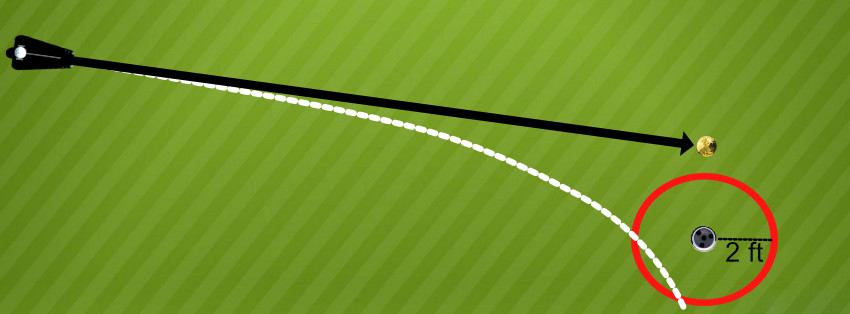
In other words, when the players aimed at a poor start line, they completely lost the ability to make a normal stroke.
This makes a lot of sense in terms of the player having misread the break consciously – so their subconscious kicks in and tries to pull/push the ball up the slope to ‘compensate’ for their poor conscious read.
What does this Mean?
- An increased ability to start the ball on your intended line (better putting stroke) will make you WORSE putter.
- More consciously you aim, worse putter you are becoming.
- Your subconscious is clever and will try to override any conscious reading mistakes you make
At this point I decided to change their intended line to aim for the the putts. I discovered, that better conscious line marginally improved the techniques of a player (ability to roll the ball down the intended start line) and the results slightly improved (3.85 out of 10 finished in the 2ft circle) still confirming my hypothesis.
Directing Attention
I decided to see what would happen 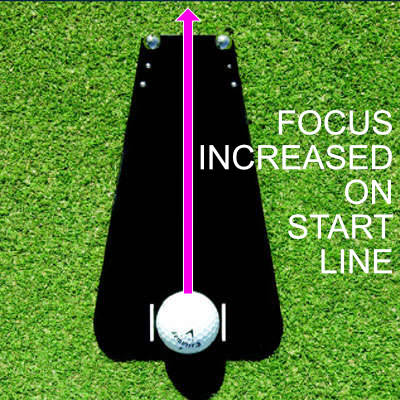 if I directed their attention towards making a better putting stroke - to focus more on the act of getting the ball through the gate, setting the challenge of trying to beat their previous score. I also asked them to give me specific feedback as to whether they thought they had hit more of a pull or a push (we used high speed video to confirm).
if I directed their attention towards making a better putting stroke - to focus more on the act of getting the ball through the gate, setting the challenge of trying to beat their previous score. I also asked them to give me specific feedback as to whether they thought they had hit more of a pull or a push (we used high speed video to confirm).
The results showed that they successfully rolled only 6.25 out of 10 through the gate.
While you may be thinking “That’s great, they improved their technique by focusing on it”, you have to realize that they still performed lower than on a flat putt (8.9).
This brings into question our ability to consciously control our stroke. There is a whole bulk of literature on free will which would agree with these findings – as well as literature on perception-action coupling.
What does this mean?
- Our ability to control our stroke is not 100% in our conscious control. Subconscious mechanisms will play a large role in what technique we provide
- The scenario you are in (uphill/downhill/right to left etc) and your perception of it will dictate a lot of what technique arises
Shocking Conclusions
I will try hard not to make extrapolations from this, but I am simply reporting the data I found when I did the study a few years ago. However, from the evidence, it is safe to say:
- Most people under-read break
- A better putting stroke will make you perform worse, unless you improve your green reading
- Your subconscious will make you produce a different stroke on a breaking putt, and you may be powerless to stop it.
- While you can increase your conscious ability to control your stroke, you may do so at the expense of performance.
- While aiming at a more correct line reduces the amount of subconscious compensations and improved the stroke, that doesn’t necessarily lead to improved performance

